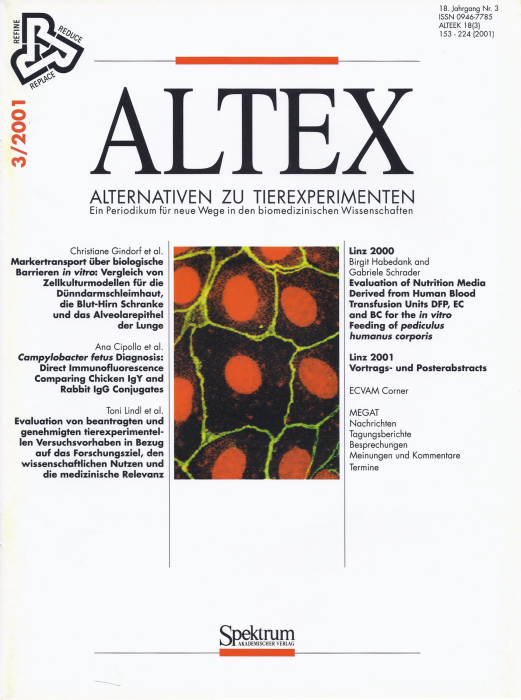[Evaluation of authorised experiments on laboratory animals with regard to the following frame of reference: The aim of the research to be carried out, its scientific usefulness and its medical relevance] [Article in German]
Main Article Content
Abstract
As a follow-up to our recent study about the suffering of laboratory animals in experiments, we investigated if results obtained from animal experiments performed in accordance with the German animal welfare act were published, and if these led to consequences in the medical field, especially in published medical literature.
According to the German animal welfare act animal experiments must be applied for at a local ethics committee which approves these experiments. All applications (51) made between 1991 and 1993 were examined in co-operation with some of the authors and the authorities.
The follow-up procedures were split into two parts:
First the declared aims of the proposals were evaluated against the applicants' own arguments with regard to the pain suffered by the animals. Secondly, it was evaluated if these proposals led to relevant publications in the scientific literature and if these results led to improvements in respective fields of research.
A ranking was established from zero (no results were published within 8 years) to three (all the proposed goals were effectively reached and published). Only one third of the proposals reached grade three, and in nearly 40% of the proposals either no relevant publications were found or these proposals were never realised.
Differentiation of the research in applied and basic research revealed that basic research per se results in a much higher percentage of grade three (over 56%). No research was done whether or not the scientific findings were applied to humans. Further details were evaluated:
1. In comparison to regulations proposed by the Swiss Veterinarian Inspectorate (BVET), in nearly 60% of the cases the suffering of the animals was underestimated.
2. In some cases despite negative results in animal experiments this research led to successful application in the treatment of human diseases
3. The research leading to grade three was predominantly done on mice and rats.
4. An evaluation of the competence of persons performing experiments was made with respect to legislation. Exceptions to these rules were investigated.
5. Some particular results obtained by the authors as well as their scientific argumentation were evaluated by comparison with all the information available in the current literature and in the light of ethical considerations.
We came to the conclusion that all argumentations and justifications to perform animal experiments for the exploration of new drugs, new surgical techniques and new biomaterials must be evaluated and justified much better before any animal experiment can be started.
Article Details

This work is licensed under a Creative Commons Attribution 4.0 International License.
Articles are distributed under the terms of the Creative Commons Attribution 4.0 International license (http://creativecommons.org/licenses/by/4.0/), which permits unrestricted use, distribution and reproduction in any medium, provided the original work is appropriately cited (CC-BY). Copyright on any article in ALTEX is retained by the author(s).


